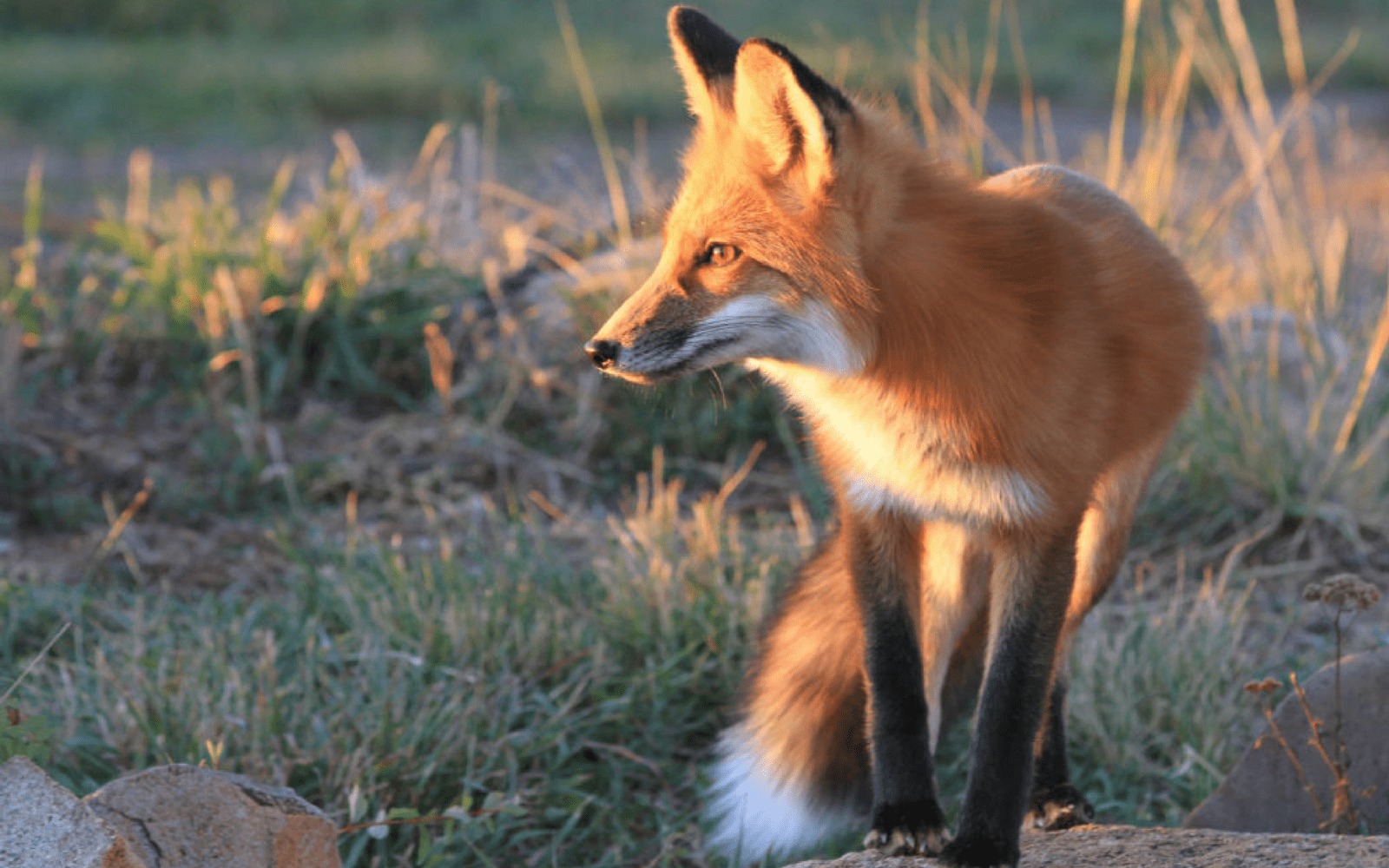We have much more to do and your continued support is needed now more than ever.
What to do When Foxes Move In

A National Wildlife Federation supporter has recently had some foxes take up residence in her yard. The fox den is roughly ten feet from her front door and she’s concerned about her family and pets. So she reached out to us for advice on what she should do.
As our naturalist and author of the book Attracting Birds, Butterflies and Other Backyard Wildlife, these kinds of questions usually get sent my way. Since many of you out there might have a similar situation, I thought I’d share my reply here.
Generally, there’s not anything to worry about when foxes choose to live in our yards. I’m assuming this is a red fox, our most common and widespread species here in North America. While they are our largest fox species, they are actually much smaller than they look. The average weight of an adult red fox is only about 15 lbs. They are mostly fur and long legs and are not much bigger than a house cat in reality. Their natural diet is wide and includes mice, voles, squirrels, muskrats, rabbits, birds, reptiles, insects, fruit and even grasses and other vegetation. They are not a threat to pets or people–as long as we don’t artificially feed them and cause them to associate us with food and lose their natural caution around people.

That said, ten feet from the front door is for sure very close proximity, so I can appreciate the concern. Unfortunately, I don’t think there’s much you can do about the foxes. If you call animal control or a wildlife removal service, most likely the result will be fatal for this family of foxes. At this time of year female foxes are denning and giving birth to their kits, so the upside is that you will likely have some incredible wildlife watching opportunities in store (and boy, are baby foxes cute).
If you’re worried about close encounters, I can offer some advice: When you exit through the front door, announce yourself loudly to alert the foxes that you’re coming out. Saying something like “hello fox, here I come!” will let them know you’re there and they’ll likely dart into their den or hide in the nearby foliage. If in their curiosity they approach you, clap and shout to scare them away. You want to teach them that humans are a danger and to avoid us.
For pets, keep them on a leash to avoid any encounters. Keeping pets under our control while outdoors is always our advice to avoid conflicts with wildlife. More often than not, it’s our pets that have the worse impact on wildlife rather than vice versa. Make sure pets are up to date on their rabies and distemper shots–this is as much to protect wildlife populations from diseases that our pets can spread as it is to protect pets from wildlife.
No matter how adorable the new kits are, NEVER feed the foxes or try to approach or pet them–this is critically important for their survival. The saying goes, “a fed mammal is a dead mammal.” When we put out bowls of pet food or kitchen scraps for wild mammals, it causes them to change their natural diet, which could cause nutritional problems. Even worse, they could lose their natural fear of humans and start approaching people. Wild animals that do that don’t survive long. If you want to help foxes, consider creating a wildlife habitat garden landscape that naturally provides what foxes and other wildlife need to survive. Find out how on our Garden for Wildlife program website.

Keep in mind that seeing foxes in urban and suburban areas is totally normal and nothing to worry about. Seeing them out during the day doesn’t mean they’re sick. In fact, living alongside foxes is pretty remarkable when you think about it, because most wildlife species decline and disappear when humans develop the land but red foxes are so adaptable that they’ve figured out how to thrive with their human neighbors. That should be celebrated!
Lastly, though it might be inconvenient, remember that the situation is temporary. The foxes will disperse by the end of the summer when the kits reach late adolescence. At that point, you can contact a professional wildlife service (a quick web search is a good start!) to help critter-proof your home to make sure the foxes, or other wildlife, don’t try to den that close to your door again. Good luck, and happy fox-watching!
If you would like to learn more about making a natural habitat for foxes and other wildlife in your yard, you can learn how on our Garden for Wildlife program website.






















